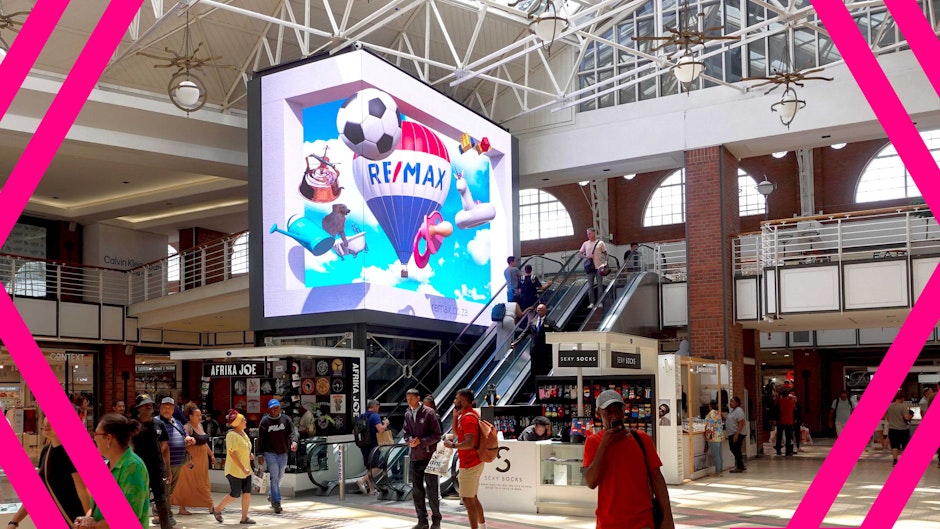How to bring 3D billboards to life with programmatic digital out of home (DOOH)
In today’s attention-driven economy, audiences are constantly pulled between multiple devices and targeted by thousands of ads each day

Out of home (OOH) advertising has always been known for its attention-grabbing capabilities, from large skyscraper billboards to on-the-ground bus stop displays, delivering messaging in a way that is both impactful and unmissable. Digital out of home (DOOH) has allowed marketers to further showcase their creative skills, with one of the most impressive advancements in the channel being anamorphic and 3D campaigns.
Highly visual and with the power to turn heads globally, audiences have been stopped in their tracks by the incredible creativity of campaigns such as Louis Vuitton’s Tokyo installation featuring Japanese artist Yayoi Kusama, to the launch of Call of Duty: Modern Warfare II in London’s Piccadilly Circus.
All the while, one of the biggest developments in DOOH has been happening behind closed doors, out of sight of audiences. The adoption of programmatic DOOH technology as a method to plan, activate and measure DOOH campaigns is growing. Combining this data-driven approach with advanced creative options such as anamorphic video not only offers precise audience targeting and campaign flexibility but also higher rates of attention from key audiences.
Finding audiences in three dimensions
Anamorphic graphics on digital screens command attention and offer an immersive experience for passers-by. With captive audiences, programmatic targeting turns DOOH from a ‘one-to-many’ medium to a ‘one-to-select-many’.
With 3D promotions costing more to create and run than 2D, marketers need to be certain that activations are reaching the eyes of their target demographic. Driven by data, programmatic DOOH has the ability to automate the purchasing and activation of campaigns according to a range of data parameters, including: audience concentration, geofenced locations, offline behavior, data triggers and proximity to a point of interest (POI).
When coupled with unique sources of audience data, marketers can effectively identify and then target audiences by only enabling promotions to activate once a threshold of a targeted audience is present.
Last year, real-estate company RE/MAX harnessed programmatic DOOH’s targeting capabilities to drive its attention-grabbing display "Dream up the life, we'll find the home" campaign in key locations in Cape Town, South Africa. The campaign incorporated larger-than-life 3D visuals to become the world’s first programmatic anamorphic video campaign delivered via DOOH.
Maximizing budgets
To cut through the noise, marketers can’t just rely on the show-stopping nature of 3D digital screens. They also need to be able to measure their impact and pivot campaigns in order to maximize audience targeting.
This is where programmatic DOOH’s data-driven approach again allows marketers to elevate their 3D activations. Via unique sources of audience data, proprietary insights, and analytics, marketers can better measure outcomes in-flight, and therefore more effectively and flexibly target audiences.
Post-campaign, marketers can access a further range of insights. For example, brand lift studies allow for awareness and brand recall to accurately assess the impact of creative on audiences. With marketing budgets coming under increased scrutiny, this ability to correlate the impact of activations to campaign KPIs is invaluable.
Bridging the gap between online and offline
While the high-impact, show-stopping nature of 3D DOOH activations is undeniable, in a world of increasingly complex purchase journeys and closely watched budgets, marketers need to ensure that these activations drive wider business outcomes. For this reason, the ability of omnichannel campaigns to holistically target and retarget audiences across multiple channels has become increasingly important. However, traditionally, DOOH has been thought of as a standalone channel. Programmatic DOOH’s audience-centric approach coupled with granular measurement, enables it to be a vital touchpoint in any omnichannel campaign.
A sneaker brand, for example, could target audiences via social media promoting their latest shoe. Digital screens within the vicinity of flagship stores could then be targeted via geofencing, while 3D creative can be triggered alongside this as a threshold of targeted audience density is reached. Changes in footfall in nearby stores can also then be tracked to measure the direct effect of the retargeting. In this way, programmatic DOOH acts as a bridge between online and offline advertising.
As 3D DOOH campaigns become increasingly ubiquitous and audiences become further accustomed to them, marketers have to do more to ensure that they maximize their impact on audiences around them. Programmatic DOOH can ensure that no budget is wasted, delivering messaging at the right place and time to the right audience.

